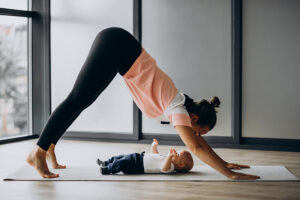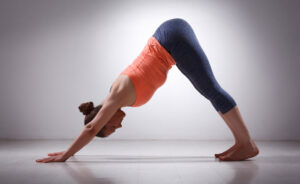Posture seems like a simple concept – stand up straight, don’t slouch, and you’re good to go. But there are many myths and misconceptions around posture that can actually lead to pain and problems over time. With so much misinformation floating around on social media and even from well-meaning friends, it’s important to separate posture fact from fiction.
Research shows that poor posture can contribute to back and neck pain, yet many popular posture “fixes” are not supported by evidence. For example, the notion that we should all maintain a perfectly straight, upright posture is unrealistic for long periods. Some slouching and lounging is normal. And constant reminders to “stand up tall!” may promote unnatural positions that tense muscles. According to the American Physical Therapy Association, optimal posture simply involves aligning your head over shoulders, shoulders over hips, etc. in a relaxed, natural position.
Another common myth is that weak core muscles only leads to bad posture. But factors like genetics, fatigue, stress, injuries, and everyday habits have a big influence too. Research shows core strength alone doesn’t necessarily improve posture. A holistic approach is needed.
By debunking posture myths, we can develop healthy habits that work with our natural alignment. Minor adjustments like lowering exaggerated arch in the lower back can relieve unnecessary tension. Simple exercises done regularly help reduce slouching and strengthen muscles. With the right information, we can find a comfortable, balanced posture for everyday life.
Posture Myths Busted – Stand Tall with Truth!
Ever heard that sitting up straight is always the best way to avoid back pain? While these are common beliefs, the truth about posture can be surprising! Let’s debunk some popular myths and set the record straight:
Sitting up straight is the “golden rule” of good posture.
While maintaining good posture is important, holding yourself perfectly rigid all day isn’t sustainable or necessary. Imagine sitting through a long lecture or working on a deadline with your back ramrod straight – sounds uncomfortable, right? Our bodies need movement and flexibility throughout the day. Instead of rigidity, focus on neutral alignment, where your spine is naturally stacked and your muscles are relaxed. Think of a strong, majestic tree instead of a stiff, brittle branch!
Lifting weights will ruin your posture.
Strength training, when done properly, can actually improve your posture! Strong muscles support your spine and joints, leading to better alignment and reducing pain. Think of it this way: a strong foundation supports a sturdy house, just like strong muscles support a healthy back. Of course, proper form is crucial to avoid injury, so consult a qualified trainer if you’re new to weightlifting.
Only certain exercises can fix your posture.
While specific exercises can target posture concerns, remember that good posture is a holistic approach. It involves not just exercise, but also maintaining healthy habits like taking breaks from sitting, maintaining a healthy weight, and managing stress. Think of it like a recipe – each ingredient plays a role in the final outcome!
Debunking posture myths doesn’t mean there’s no truth to good posture. It’s about understanding what truly matters for healthy alignment and movement.
Understanding Your Body’s Blueprint: The Science Behind Good Posture
Imagine your body as a magnificent building. Your bones are the sturdy pillars, your muscles the flexible cables, and your posture is the overall architecture. Just like a well-built structure, good posture ensures everything stays aligned, strong, and functioning smoothly.
So, what’s the science behind this “architecture”? It all boils down to two key players:
1. The Powerhouse: Your Core Muscles
Think of your core muscles like a hidden superhero, holding everything together. From your deep abs to your back muscles, they work together to stabilize your spine and prevent slouching. Imagine sitting cross-legged on the floor during a puja ceremony, a common practice in India. While it might seem like a slouched position, strong core muscles can help maintain proper alignment even in such postures.
2. The Movers and Shakers: Flexibility and Biomechanics
Our bodies are meant to move! Tight muscles can throw off our alignment and lead to pain. Think about the times you’ve hunched over a desk for hours, only to feel stiff and sore later. Stretching regularly helps keep your muscles flexible and your joints happy, allowing for smooth, pain-free movement.
Biomechanics comes in like the architect of your movement. It’s the science of how your body moves, and understanding it can help you move efficiently and avoid strain. Imagine practicing yoga, a popular activity in India. Yoga poses engage various muscle groups and joints, promoting good biomechanics and improving overall posture.
The Long Game: The Benefits of Good Posture
Good posture isn’t just about looking good (though that’s a nice perk!). It’s about investing in your long-term health. Studies show that good posture can:
- Reduce back pain and neck pain
- Improve breathing and digestion
- Boost energy levels
- Enhance mood and confidence
Good posture isn’t about staying rigid, but about finding comfortable alignment that allows your body to move freely and function optimally.
Find Your Posture Power – Personalized Tips for a Straighter You
Remember that building isn’t one-size-fits-all, right? The same goes for good posture! While general tips are helpful, what works for your friend might not be the best for you. That’s why personalized solutions are key to unlocking your posture power.
Know Yourself, Know Your Posture:
Think about your daily routine. Are you a student hunched over books? A busy professional glued to a computer screen? Maybe you enjoy sitting on the floor in traditional Indian poses like Sukhasana. Understanding your unique habits and activities is the first step to tailoring your posture approach.
Seek Expert Guidance:
Consulting a qualified professional like a physiotherapist can be incredibly helpful. They can assess your posture, identify any imbalances, and recommend personalized exercises and stretches. Think of it like getting your posture “blueprints” checked by an architect!
DIY Tips for Everyday Improvement:
While seeking professional help is great, there are things you can do right now:
- Mind your posture: Throughout the day, gently remind yourself to sit up tall and relax your shoulders. Imagine a string gently pulling you up from your head.
- Move it or lose it!: Sitting for long periods can be detrimental. Take regular breaks to stretch, walk around, or even do simple chair exercises. Imagine yourself being as flexible as a bamboo tree, swaying gently in the breeze.
- Ergonomics are your friend: Adjust your workspace to fit your body. Ensure your monitor is at eye level, your chair supports your back, and your feet are flat on the floor. Think of it like creating the perfect environment for your body to thrive.
- Stretch and strengthen: Regularly incorporating stretches and exercises that target your core, back, and neck muscles can improve your posture and prevent pain. Think of it like building strong pillars to support your body’s architecture.
Want a Personalized Posture Coach in Your Pocket?
Check out FlexifyMe! This innovative app uses AI technology and connects you with certified trainers to create a personalized posture plan based on your needs and lifestyle. Imagine having your own pocket-sized posture expert guiding you every step of the way!
Stand Tall with Confidence – Your Posture Journey Begins Now
So, we’ve explored the myths, delved into the science, and discovered personalized solutions for achieving good posture. Remember, standing tall isn’t just about looking good, it’s about feeling good and living well!
Think about it: good posture boosts your confidence, improves your energy levels, and can even help prevent pain down the line. It’s an investment in your well-being, similar to nurturing a beautiful garden that flourishes with the right care.
But remember, the journey to good posture is personal. What works for your friend might not work for you. That’s why critical thinking is key. Listen to your body, identify your unique needs.
Here are some final reminders:
- Small, consistent changes are more effective than crash courses. Integrate posture awareness into your daily routine, like gently reminding yourself to sit tall or taking regular stretch breaks.
- Healthy habits like regular exercise and maintaining a balanced diet support your posture journey. Think of them as the fertile soil that nourishes your “posture garden.”
- Professional guidance can be invaluable. Consulting a physiotherapist or healthcare professional can provide personalized advice and address specific concerns.
Ready to take the next step? FlexifyMe can be your partner on this journey! With its personalized posture plans, certified trainers, and AI technology, FlexifyMe empowers you to build good posture that’s unique to you. Imagine having a pocket-sized posture coach guiding you every step of the way!
Remember, you have the power to stand tall with confidence. Start your posture journey today and experience the benefits of feeling strong, healthy, and empowered!


